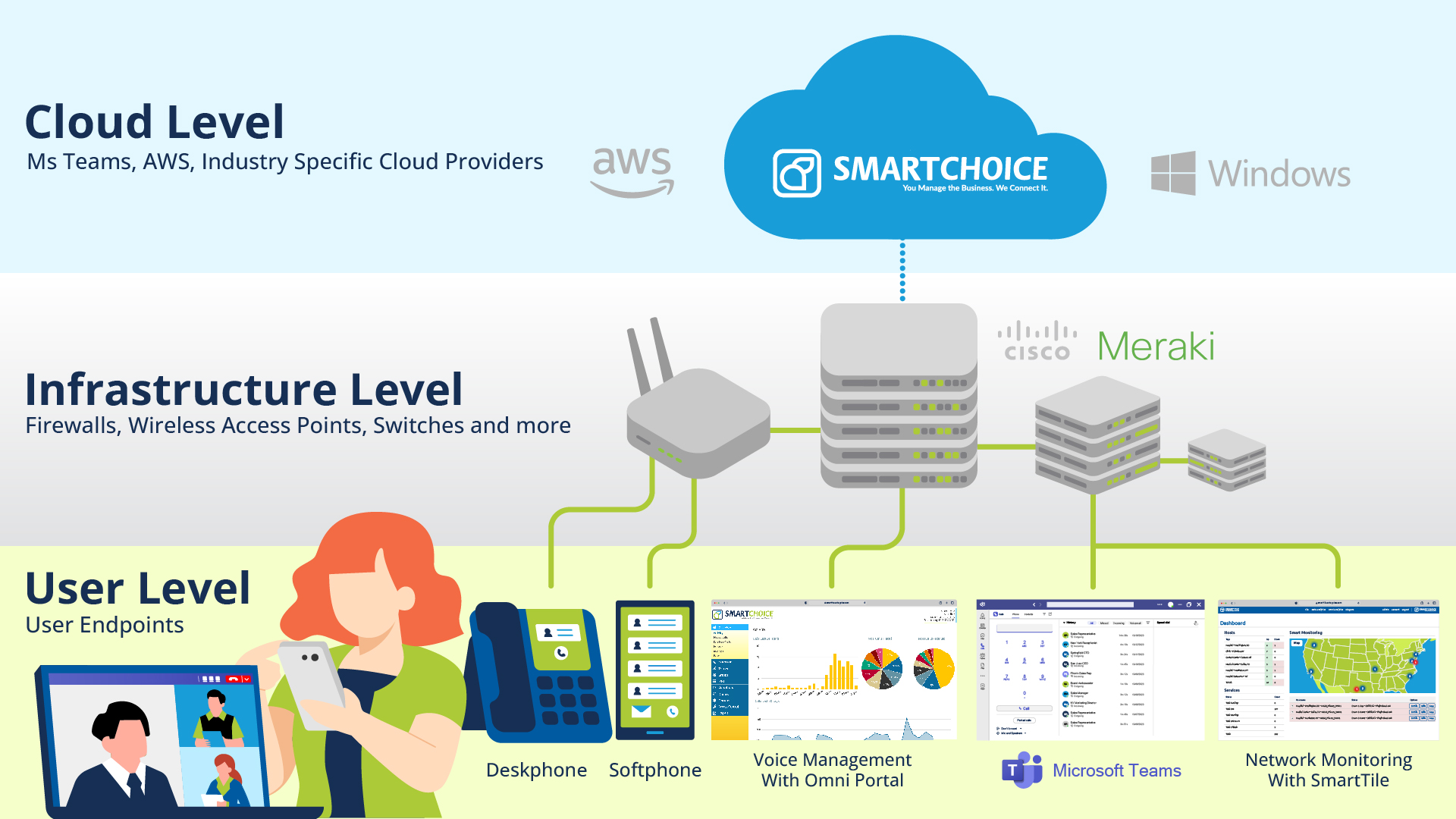In-Office and Remote Scalable Internet Solutions

Introduction
The demand for scalable internet solutions that can seamlessly support both in-office and remote work has never been greater. With the rise of the hybrid work model, where employees split their time between the office and remote locations, having a reliable and flexible internet connection is crucial for productivity and communication. In this blog post, we’ll explore various options for scalable internet solutions that cater to the needs of businesses operating in this new hybrid landscape.
Fiber Optic Internet: The Gold Standard
When it comes to fast and reliable internet, fiber optic is the gold standard. It offers high-speed internet connections that are ideal for businesses with a mix of in-office and remote employees. Fiber optic cables use light signals to transmit data, resulting in lightning-fast speeds and low latency. This makes it perfect for video conferencing, large file transfers, and other bandwidth-intensive tasks.
The scalability of fiber optic internet is another key advantage. Businesses can easily upgrade their bandwidth as needed, ensuring that they can accommodate the growing demands of remote work without compromising on performance.
Business Broadband Internet: Reliability and Consistency
Business broadband internet is a dedicated internet service designed specifically for businesses. It provides a reliable and consistent connection, making it suitable for companies that rely heavily on cloud-based applications and data-sharing. Business broadband packages often include service level agreements (SLAs) that guarantee uptime and response times for issue resolution.
Business broadband services can be scaled up to meet increased demand, making it a suitable choice for businesses transitioning to a hybrid work model. It ensures that both in-office and remote employees can access the internet without interruptions, ultimately enhancing productivity.
Satellite Internet: Bridging the Gap
For businesses in remote or rural areas where traditional internet options may be limited, satellite internet can be a game-changer. Satellite internet beams data to and from a satellite in space, providing internet access to areas that would otherwise be underserved.
While satellite internet may not offer the same speeds as fiber optic or business broadband, it provides a viable solution for remote work in areas with limited infrastructure. It’s scalable, allowing businesses to adjust their plans as needed, making it a valuable option for supporting a hybrid workforce in challenging geographical locations.
Mobile Hotspots and Cellular Data
In some cases, especially for small businesses or temporary remote setups, mobile hotspots and cellular data plans can provide a quick and flexible internet solution. Employees can use their smartphones or dedicated mobile hotspot devices to connect to the internet via cellular networks.
While this option may not be as fast or reliable as fixed broadband solutions, it offers portability and convenience. It’s an excellent choice for employees on the go or for providing temporary internet access during office renovations or remote work trials.
SD-WAN (Software-Defined Wide Area Network)
SD-WAN is a technology that optimizes the performance of wide-area networks, including internet connections. It’s particularly beneficial for businesses with multiple locations or remote workers. SD-WAN allows for the aggregation of multiple internet connections, including broadband, MPLS, and LTE, to create a robust and scalable network.
The beauty of SD-WAN is its ability to prioritize traffic and dynamically route it over the most efficient and cost-effective connection available. This ensures that critical applications receive the necessary bandwidth while less important traffic is routed over less expensive connections.
Hybrid Cloud Solutions
For businesses heavily invested in cloud-based applications and services, a hybrid cloud solution that combines on-premises infrastructure with cloud resources can optimize internet usage. By strategically managing which data is stored on-site and which is in the cloud, businesses can reduce their internet bandwidth requirements, leading to cost savings.
This approach enables businesses to scale their internet needs by leveraging cloud resources and adjusting their on-premises infrastructure as necessary. It’s a smart choice for companies aiming to balance in-office and remote work efficiently.
Content Delivery Networks (CDNs)
CDNs are a network of distributed servers that deliver web content, including images, videos, and web pages, to users based on their geographical location. While not a direct internet solution, CDNs can significantly improve the performance of web-based applications and services.
By utilizing CDNs, businesses can reduce the strain on their internet connections when employees access cloud-based applications. CDNs cache content locally, minimizing the need for constant data transfers over the internet.
Conclusion
In the era of hybrid work, having scalable internet solutions that support both in-office and remote work is essential for maintaining productivity and effective communication. The right choice depends on various factors, including location, business size, and specific needs. Fiber optic internet, business broadband, satellite internet, mobile hotspots, SD-WAN, hybrid cloud solutions, and CDNs are all viable options to consider.
Ultimately, businesses should assess their current and future requirements to determine the most suitable internet solution for their unique circumstances. By investing in scalable internet solutions, companies can ensure that their employees remain connected and productive, regardless of where they work. The key is to adapt and embrace technology to meet the evolving demands of the modern workforce.





